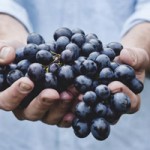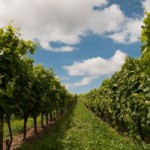Great wine starts in the vineyard. According to some viticulturists, if you get it right in the vineyard, a trained donkey could make good wine. So what makes one patch of dirt better than another, when it comes to grape growing?
“Terroir” (which refers to all the environmental and cultural aspects of a region) will influence every feature of a wine, from variety to viscosity. As Matt Kramer of Wine Spectator says, terroir is that special “somewhereness” that you can taste in a splash. Terroir considers:
- Soil type and fertility: silt, sand, clay and loam are the soil types chiefly found in vineyards. Sandy soils result in aromatic wines, low in tannin and pale in colour. Clay-based soils retain water and tend to be cooler, driving rich, bold reds and whites (Barossa shiraz, anyone?). The fine grains of silt soils retain water and heat, leading to delicate, lightly-coloured wines such as an Oregon pinot noir. A combination of soil types is known as “loam”, which tends to result in vigorous growth – which is great if you’re a bulk producer in the Napa… Volcanic soils also retain water and, when coupled with warm, arid climate, result in hearty reds andbold whites.
- Climate: general, year-round weather conditions are referred to as the climate. Cool, dry climates produce crisp, light wines with bright fruit flavours, whereas warm climates like Heathcote, Victoria lend themselves to bigger, bolder wines, soft in acidity with lush fruit flavours.
- Weather conditions: sun, wind and rain will make or break a vintage. The weather in spring determines the quality of the vintage, but it’s the last six weeks that dictates the quality of the fruit. Late rain will cause grapes to rot and frost can damage already ripened fruit. Too much sun will “overcook” the grapes, resulting in overripe, jam-like flavours.
- Drainage: vines need water, but they ripen best when water is just within reach. A vineyard with natural drainage (via rocky soils etc.) results in a wine of concentrated flavours, but too much water yields “overblown” fruit.
That said, there’s a healthy human component too. Deciding when to pick which grapes, how to press, bottle and ferment them, and when to drink the wine are some of the many decisions that result in the differences between wines of the same variety, vintage and region. For more see :
http://www.weather.com/farming/news/weathers-effect-grapes-and-wine-20140325


